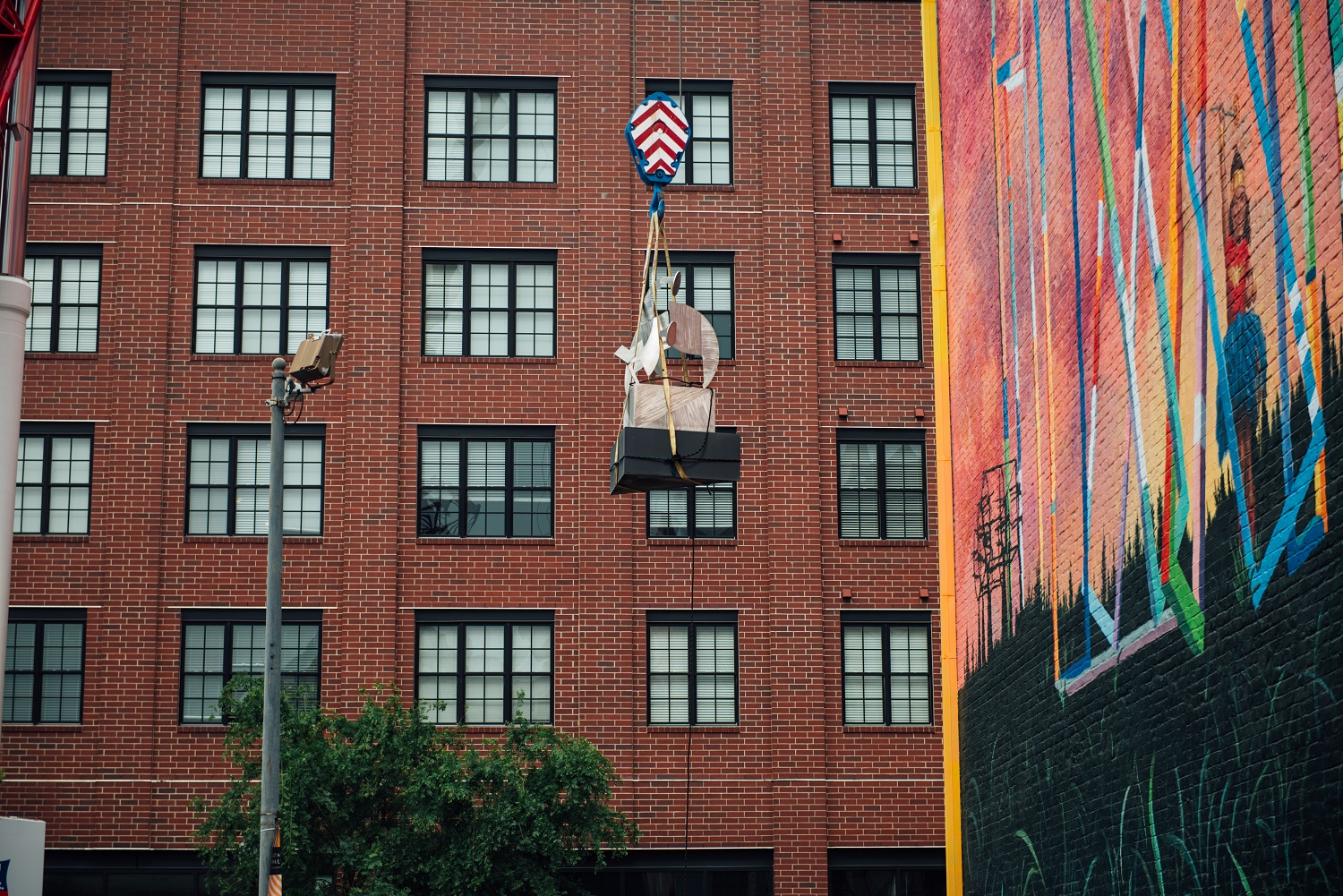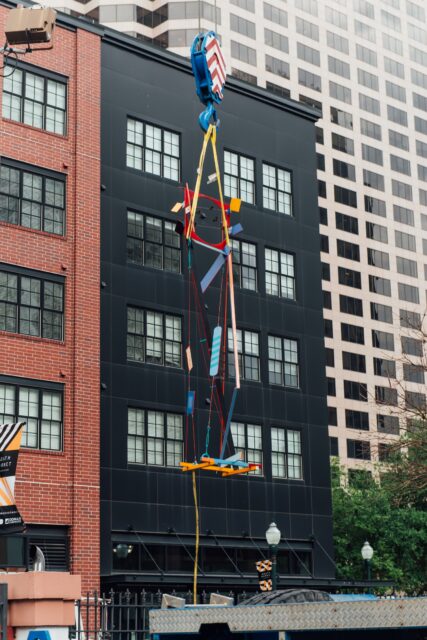The Helis Foundation John Scott Center Opens
A new interactive gathering space will showcase the artist’s life and work
Published: May 31, 2022
Last Updated: August 30, 2022

Photo by Lavonte Lucas
The Helis Foundation John Scott Center Opens
Three main exhibition galleries will present fifty-one of Scott’s works, including those in the LEH’s permanent collection and loans from Xavier University of Louisiana, Arthur Roger Gallery, and the John T. Scott Artist Trust and Anna Rita Scott. The sculptures, prints, multimedia paintings, and woodcuts on display will introduce viewers to the breadth of Scott’s artistic vocabulary, as well as the complex themes of heritage and symbolism that animated much of his work. Programming at the center will draw from Scott’s body of work and focus on the overarching theme of “Dancing at the Crossroads.” Four areas of interpretive focus will include Honoring the Ancestors, Displacement and Exile, Jazz and Civil Rights, and the Urban Warrior. The theme and focus areas will establish an interpretive framework to explore the stories and histories that remain critical and relevant for understanding our culture. This humanities approach to exhibition design will showcase how the arts and humanities, as disciplines, can engage audiences in an intentional and personal way.

Part of Urban Windmill being transferred to the 1st floor. Photo by Lavonte Lucas.
The Helis Foundation John Scott Center is helmed by Asante Salaam, an artist and experienced arts administrator whose father, the poet Kalamu ya Salaam, had grown up with Scott and maintained a friendship. Scott and his work would intersect with the younger Salaam’s life, career, and network repeatedly over the years: she studied with Scott as an art student at Xavier University—and once she emerged into her own career as an arts administrator, she hired Scott’s son Ayo to conduct programs. (Ayo, an artist himself, would later add a mural to the Turners’ Hall exterior.) Salaam’s mother Tayari kwa Salaam worked as a curriculum consultant with Prime Time Family Reading, giving her a familiarity with one of the LEH’s flagship programs. What Center director Salaam calls the “one-and-a-half degrees of connection” in New Orleans has given her a deep understanding of Scott’s legacy as well as a window into how the LEH could support the strengthening and maintenance of that legacy.
Salaam positions herself within a family tradition of working to make the arts thriving and accessible in New Orleans. “Before community engagement was a word, before I knew what activism was, I was just familiar with producing. Whether it was events, whether it was publishing, whether it was art projects. My parents have been cultural arts activists, change agents, institution builders since I was a kid.” This idea of bringing the parts of a project together, of weaving to form a whole, echoes the work John Scott left as his legacy.
Scott was an unusually “multilingual” artist, approaching a variety of themes through works in a number of distinct media. This wide and varied body of work means a curator must think critically about the best ways to introduce Scott’s art to audiences. As aninitial jumping-off point at The Helis Foundation John Scott Center, Salaam looks to I’ve Known Rivers, a pavilion Scott designed for the 1984 World’s Fair in New Orleans in cooperation with other artists and architects, including her uncle Kenneth Ferdinand. As described by Salaam, the work “highlights the history of Africans in New Orleans, from our ancestor continent to where we are now and the migration across America. Then it highlights various sectors and industries, whether it’s working at home doing sewing and embroidery and crochet, or more vocational craft pursuits like welding and construction. And then into realms of education and academia from the sciences and cosmology to technology.” Salaam sees this multifaceted work as emblematic of what The Helis Foundation John Scott Center can offer. “[I’ve Known Rivers] touches on historic eras of social change. And it’s all presented as art, as a visual art experience. A space for people to come in and see and learn and get inspired or get reminded or get informed, learn, connect, which is what the center is for.”

Daniel Britt from American Machinery Movers adjusts some of Urban Windmill’s colorful components. Photo by Lavonte Lucas.
Salaam also intends to place the center and its mission within the context of New Orleans, long a site of cultural production and an especially important locus of Black creativity. “If you love art and culture, there’s no way you don’t want to come to New Orleans. New Orleans is a global destination and a sister city of any place in the world, basically, because you can go anywhere in the world and say ‘I’m from New Orleans,’ and you don’t have to explain what that means.” The center’s location, in a downtown district that hosts not only much of the city’s commerce but also many of its galleries and arts institutions, will allow The Helis Foundation John Scott Center to become part of the city’s wider conversations about art, culture, and social change.
Accessibility is another key factor for Salaam. She plans to design a youth ambassador training curriculum, providing an opportunity for local students to become involved in the center and ultimately participate in the ongoing interpretive process. For visitors, she conceives of the center as “designed and created in a way that everybody has an entry point. . . . No matter who you are, where you’re from, what you’re interested in, that there’s an access point for you that is readily available.” Though programming will be a key part of the center’s mission, Salaam also plans for a simple visit to the galleries to be a rewarding experience: “You know that if you come today, even if there’s no program scheduled, you will experience something of value.”
This summer, an opening event series will welcome visitors to the space and begin public conversations about Scott’s work and legacy. Check leh.org for the latest updates on the center’s opening and events specifics.
